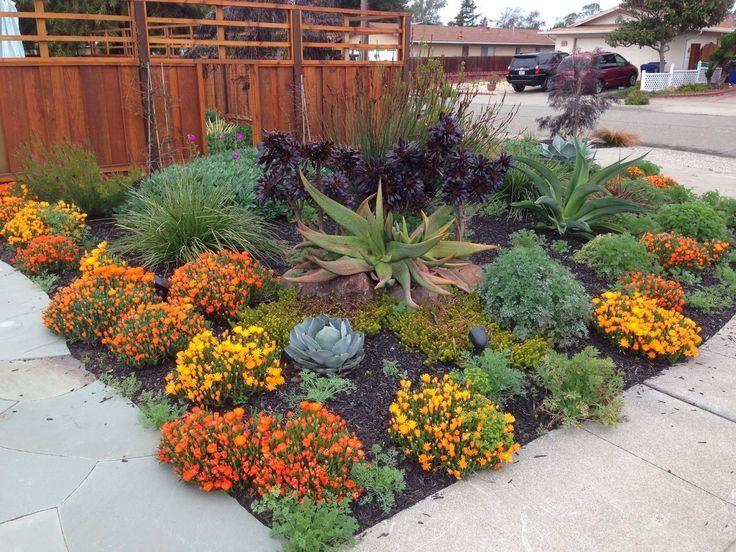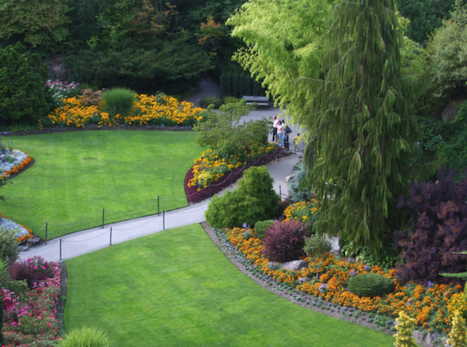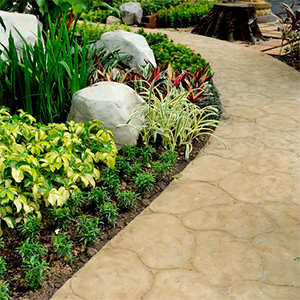Elevate Your Home's Visual With Lasting Landscape Design Layouts and Eco-Friendly Practices

Benefits of Lasting Landscape Design
Implementing sustainable landscape design practices not only conserves natural sources yet also promotes biodiversity and improves total environmental health. One substantial benefit is the reduction of water usage via the use of drought-resistant plants, rain yards, and reliable irrigation systems.
Additionally, sustainable landscaping can improve soil health and wellness by reducing using chemical fertilizers and chemicals, therefore developing a much healthier environment for plant growth and valuable soil organisms. This, consequently, improves the general durability of the landscape to withstand ecological stressors and climate change influences - bush removal Jacksonville. In addition, lasting landscape design techniques can draw in diverse wild animals, including pollinators like butterflies and , fostering an extra well balanced and vivid community within the residential or commercial property
Incorporating Native Plants
To build on the advantages of sustainable landscape design, a tactical concentrate on integrating indigenous plants can further enhance eco-friendly durability and promote biodiversity within the landscape. Indigenous plants are types that naturally take place in a specific location and have advanced to flourish in the local environment, dirt problems, and ecosystem. By including indigenous plants in landscaping layouts, homeowner can lower water usage, reduce the need for chemical pesticides and plant foods, and sustain the regional wildlife populace.
Incorporating native plants additionally helps in maintaining the one-of-a-kind personality and identity of an area's plants. These plants usually require less maintenance once established, making them a sustainable and cost-efficient landscaping service over time. In addition, indigenous plants can bring in native pollinators like butterflies and bees, adding to the total health of the ecosystem.
When picking indigenous plants for landscaping projects, it is necessary to choose species that are fit to the particular ecological problems of the site. Consulting with regional baby rooms or arboretums can provide valuable assistance on selecting the appropriate indigenous plants for a certain area. By integrating indigenous plants right into landscaping designs, homeowner can develop gorgeous, lasting outside areas that profit both the neighborhood and the atmosphere.

Water Preservation Methods
Reliable watering methods play a crucial function in lasting landscaping techniques, guaranteeing optimum water conservation efforts in outside areas. Carrying out methods such as drip irrigation, rain harvesting, and smart watering systems can dramatically minimize water waste while maintaining a healthy landscape. Trickle watering provides water straight to the roots of plants, minimizing evaporation and overflow. Rainwater harvesting includes gathering rainwater from roof coverings and storing it for later use in irrigation, decreasing the reliance on municipal water resources. Smart irrigation systems make use of weather condition data and soil dampness degrees to change watering routines, avoiding overwatering and promoting water performance.
In addition to advanced watering methods, xeriscaping is another water-saving landscape design technique that concentrates on utilizing drought-resistant plants, mulch, and reliable watering to develop a low-water landscape style - landscaping companies Jacksonville. By picking native plants that are well-suited to the neighborhood climate and dirt conditions, homeowner can minimize the requirement for excessive watering, ultimately conserving water and promoting a lasting outdoor environment
Eco-Friendly Hardscaping Ideas
Enhancing outside rooms with green hardscaping functions can contribute substantially to sustainable landscaping methods. Opt for products like recovered timber, recycled concrete, or all-natural stone to minimize environmental impact when considering hardscaping components. These products not just include a distinct visual appeal to your websites exterior area but likewise reduce the requirement for brand-new resources extraction.
Applying absorptive leading choices such as crushed rock or absorptive concrete can help in reducing water runoff and advertise groundwater recharge. These options enable rain to permeate right into the ground, preventing disintegration and minimizing the burden on stormwater systems.
Incorporating indigenous plants right into hardscaping styles can further improve eco-friendliness by supporting local wild animals and minimizing the need for excessive watering or chemical therapies. By incorporating upright yards or eco-friendly walls, you can introduce extra vegetation into urban settings, boosting air top quality and biodiversity.
Integrating energy-efficient illumination, such as solar-powered LEDs, into hardscaping styles can lower electrical power intake and reduced your property's carbon impact. Prioritizing environmentally friendly hardscaping concepts not just boosts the charm of your outside area but likewise demonstrates a commitment to ecological stewardship.
Maintenance Tips for Sustainable Landscapes

Routinely trim plants to advertise healthy and balanced growth and prevent overgrowth that can lead to pest infestations or conditions. Usage organic fertilizers to nourish the dirt and plants without damaging chemicals that can seep into the environment. For hardscaping aspects, such as permeable pavers or stone pathways, regularly tidy them to stop particles build-up and keep their performance. By remaining positive with maintenance tasks, you can maintain the elegance and sustainability of your landscape for several years ahead.
Conclusion
To conclude, lasting landscaping practices supply many benefits for homeowner, from enhancing the aesthetic allure of the look at here environments to advertising environmental preservation. By including indigenous plants, executing water conservation strategies, and using green hardscaping concepts, homeowner can produce stunning landscapes that are additionally environmentally liable. With correct upkeep, sustainable landscapes can add and prosper to a much healthier environment for both humans and wildlife.
In addition, sustainable landscape design can boost soil health and wellness by minimizing the use of chemical plant foods and chemicals, therefore producing a much healthier setting for plant growth and helpful dirt organisms.To develop upon the advantages of lasting landscape design, a strategic focus on integrating indigenous plants can better enhance environmental strength and advertise biodiversity within the landscape. By consisting of native plants in landscaping layouts, property owners can minimize water use, minimize the requirement for chemical pesticides and plant foods, and sustain the local wildlife population.
These plants commonly call for Learn More much less upkeep once established, making them a economical and lasting landscaping service in the long run. By integrating native plants into landscape design layouts, residential or commercial property proprietors can develop gorgeous, lasting outdoor spaces that benefit both the atmosphere and the area.